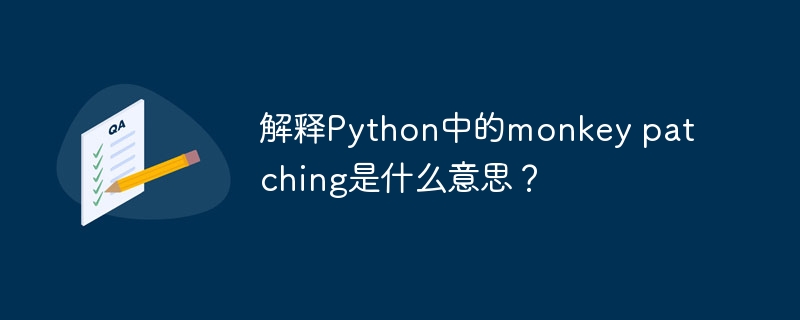解釋Python中的monkey patching是什麼意思?
- PHPz轉載
- 2023-08-19 11:53:16973瀏覽

Monkey patching is the technique of dynamic modification of a piece of code at the run time. Actually by doing monkey patch we change the behavior of code but without affecting the originalsource .
歷史
Monkey patch(猴子補丁)一詞源自於遊擊補丁(guerrilla patch),guerrilla幾乎意味著大猩猩,可以定義猴子物種。遊擊補丁指的是秘密地進行變更。但是猴子補丁聽起來更容易發音,所以現在被稱為“Monkey patch”。在「Monkey-patch」一詞中,monkey定義了dynamic(動態)這個字。
Monkey patching in python
Monkey patching in python refers to modifying or updating a piece of code or class or any module at the runtime. In simple words, we can change the behavior or working of a class/ module at the runtime at sooo . But sometimes monkey patching is considered bad practice because the definition of object does not accurately describe how the object is behaving in the code.
Example
class first:
def print(self)
print(“hello world”)
輸出
If we run the above code it will generate the following output −
Hello world
代碼猴子補丁後
Example
Import monkey def monkey_function(self): print(“Hello world”) # updating the print() with monkey_function() monkey.A.print = monkey_function # revoking method print() as method monkey_function() obj = monkey.A() obj print()
輸出
If we run the above code it will generate the following output −
Hello world
以上是解釋Python中的monkey patching是什麼意思?的詳細內容。更多資訊請關注PHP中文網其他相關文章!

